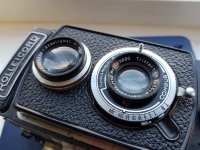hap
Well-known
MTF shows three dimensional characteristics of lenses perfectly if it is presented three-dimensionally, but it basically never is presented that way. A manufacturer typically measures or calculates MTF at 50x the focal length, or, increasingly and frustratingly, wherever MTF is calculated to look best (“our Bragicron is better than your Corvus!!!”). To show MTF this way you need either a mutidimensional model output or, to visualise it, a chart per f stop and frequency response. It makes the whole thing vastly harder to read, quite a challenge given how basic 2-D MTF charts are typically misinterpreted.
Modern glass, coating and manufacturing techniques make arguments about the number of elements moot - lens designers can use as few or as many as they choose. One overlooked factor is that the fewer elements you have, the greater the mechanical precision required for manufacture, because the same proportional misalignment causes a greater optical change in the imaging characteristics.
Marty
I could be wrong as I am far from knowledge of lens design. However, it seems that is the strategy of Miyazaki of MS Optical. Exploring the potential of modern glass and coatings to update simple and fewer number element lens designs of "old".
However, having owned a MS Optic sonnar the haptics are quirky. I'd like to try a 21mm f4 triplet Perar.








